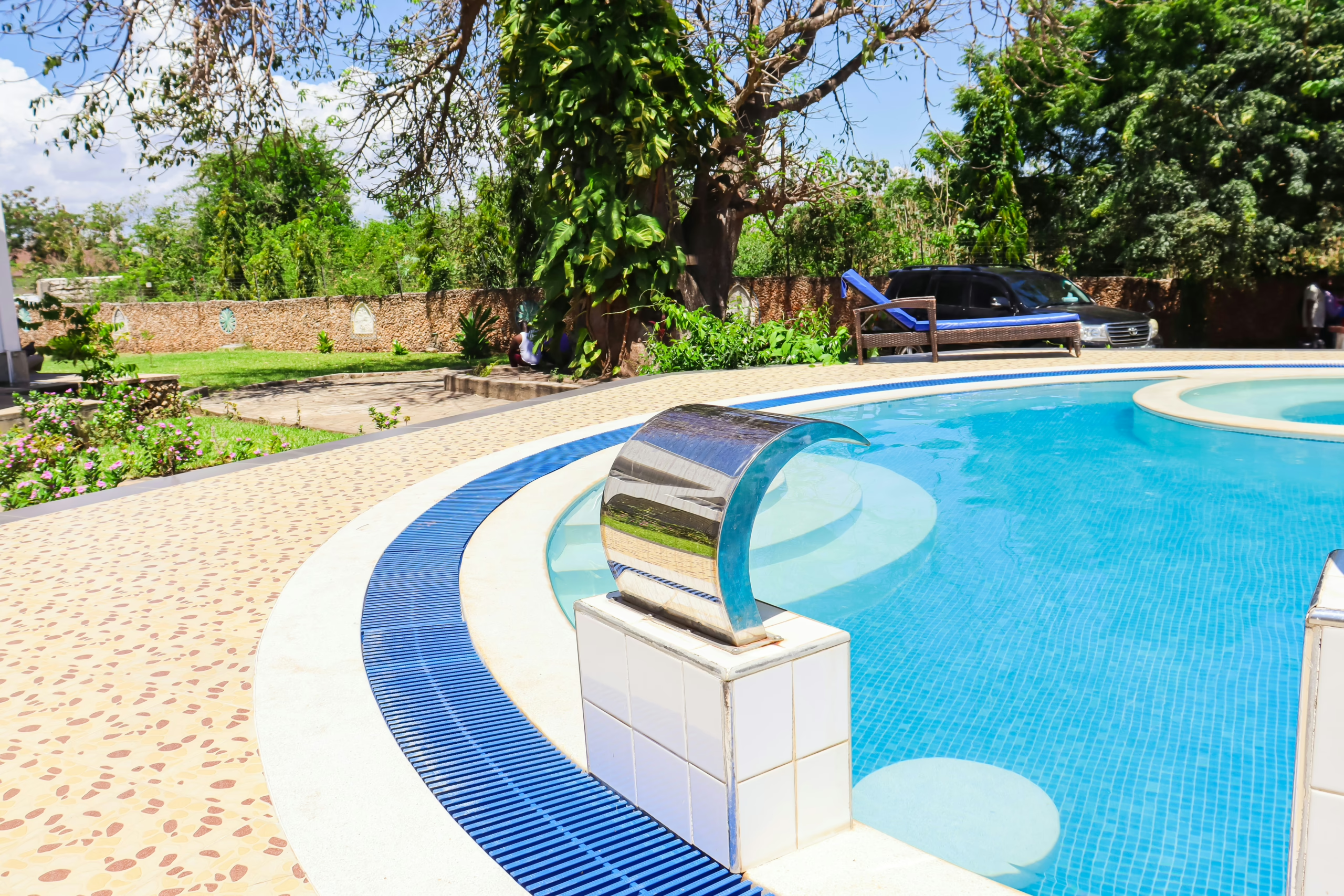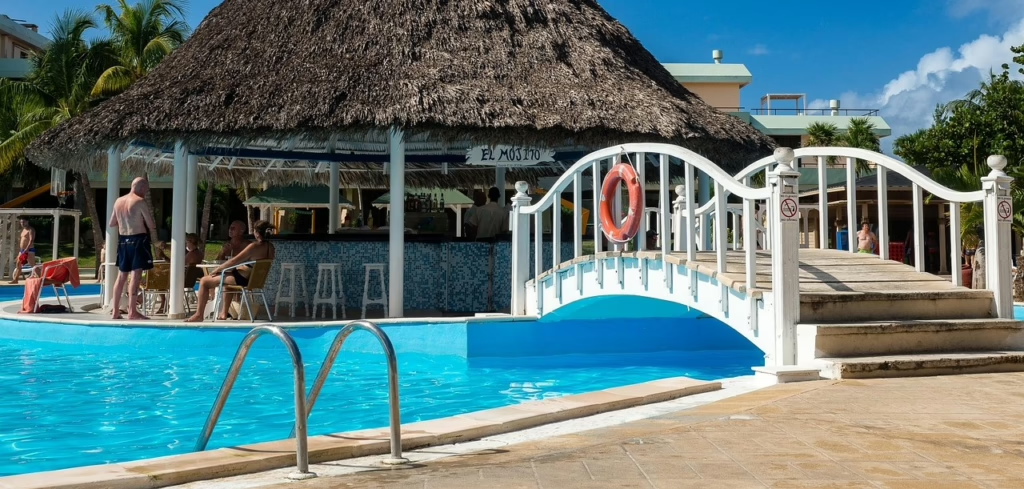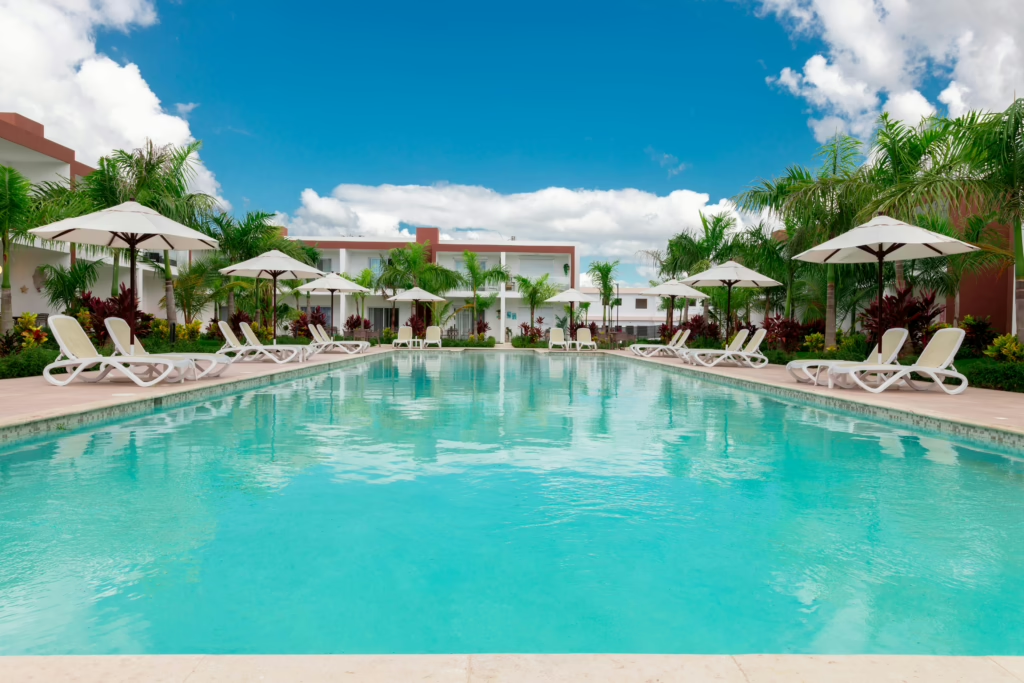Oh, the delightful aroma of spring is in the air! Birds are chirping, flowers are blooming, and if you’re anything like me, you’re already dreaming about enjoying a refreshing dip in your pool. Before you get ready to take off those pool covers, we’d love to ask you something important: Is your pool filtration all set for the busy season ahead? Not quite yet? Feeling a bit uncertain? Are you still looking for filter cleaning near me? Don’t worry! In this article, we’ll chat about how to get your pool’s filtration system ready for the busy season ahead.
At Cabana Pools, we believe that early preparation can prevent numerous issues, including green, cloudy water, in the future.
Understanding Your Pool’s Filtration System
Consider your pool’s filtration system as its diligent heart and kidneys. It helps ensure your water stays clean, clear, and safe for swimming. Your pool system usually has a pump, a filter, and plumbing that helps circulate water all around your pool.
- The pump draws water from the pool and sends it through the filter.
- The filter happily catches dirt, debris, and other unwanted particles.
- Great news! The clean water is back in your pool, just waiting for you to dive in and enjoy.
If your filtration system isn’t working well, your pool water might turn into a cozy spot for bacteria and algae, and that’s not ideal at all!
Signs Your Filtration System Needs Attention
How, then, would you know whether your filtration system is already showing signs it needs attention? These are some clear signals to stay alert for:
- Cloudy water: Often the first and clearest indication your filter has problems.
- Reduced water flow: Should the water returning to your pool seem weak, this could point to a pump obstruction or water pump malfunction.
- Unusual sounds: Unwanted sounds from the pump, such as grinding or rattling, could indicate mechanical difficulties, including worn bearings.
- Visible debris: It may be time to give your filter some attention if dirt and trash are accumulating in your pool even following regular cleaning.
- Increased algae growth: An underperforming filtration system can lead to algae growth, turning your pool into a green, slimy mess.
When you see these signs, you have to act fast and give your filtration system the attention it needs.
Essential Pre-Season Maintenance Tasks
Here’s a rough checklist of essential maintenance tasks you need to carry out before the swimming season kicks into high gear:
1. Inspect and clean the pump basket
Before working on your pump, turn it off to avoid accidents. The pump basket is designed to catch large debris like leaves and twigs. A clogged pump basket restricts water flow and puts extra strain on the pump. Remember to inspect your pump basket regularly.
2. Check for pump and motor issues
Give your pump and motor a thorough check and look for signs of leaks, cracks, or corrosion. If you detect anything unusual, consult a professional. Are there strange noises like grinding or squeaking? These may indicate worn bearings or other mechanical issues. If you feel comfortable doing so, consider lubricating the motor bearings. Otherwise, it’s preferable to contact a professional pool pump cleaner near me.
3. Service your filter
There are three main types of pool filters: sand, cartridge, and diatomaceous earth (DE). Whatever type of filter you have, it’s always crucial to keep it in excellent shape.
- Sand Filters: Backwash the filter by reversing the water flow to flush out trapped dirt and debris. How often you should backwash depends on use, but typically every 1-2 weeks is sufficient.
- Cartridge Filters: Remove the cartridge and rinse it thoroughly with a garden hose. For a deeper clean, you can soak it in a special filter cleaning solution. Replace the cartridge every 1–2 years or as needed.
- DE Filters: Backwash the filter to remove accumulated DE and debris. Then, recharge the filter by adding fresh DE powder.
4. Inspect and clean the skimmer baskets
Just like the pump basket, the skimmer baskets catch debris before it reaches the pump and filter. Regularly empty and rinse the skimmer baskets to maintain excellent water flow.
5. Check all o-rings and gaskets
O-rings and gaskets create watertight seals in your filtration system. Over time, they can become brittle, loose, and cracked, leading to leaks. Inspect all O-rings and gaskets for damage and replace them as needed. A little silicone lubricant can help keep them pliable and prevent leaks.
6. Flush and check the lines
Over time, mineral deposits and debris can build up in your pool’s plumbing lines, restricting water flow. Use a garden hose with a high-pressure nozzle to flush the lines. Pay special attention to areas where the pipes bend or connect to equipment.
7. Calibrate and test control systems
Many modern pools have automated control systems that regulate filtration, sanitization, and other functions. Make sure these systems are properly calibrated and functioning correctly. Test all sensors and timers to ensure they’re accurate and reliable.
Optimizing Filtration for Peak Performance
After you’ve wrapped up the important maintenance tasks, it’s a great time to tweak your filtration system for the best performance possible. Here are some friendly tips to consider:
1. Adjust Run Times
Keeping your pool pump running 24/7 might feel like a great idea for maintaining clean water, but it can actually lead to unnecessary energy costs. The perfect runtime really depends on things like the size of your pool, how often you use it, and the climate in your area. It’s a good idea to run your pump for about 8–12 hours each day, especially during those off-peak electricity hours when rates are lower!
2. Consider Variable Speed Pumps
If you want to save energy and cut down on noise, think about upgrading to a variable-speed pump! These pumps let you tweak the motor speed to perfectly suit your pool’s unique needs. You can easily run the pump at a lower speed for your everyday filtration needs and then just boost the speed when it’s time for vacuuming or backwashing!
3. Schedule Professional Service
It’s a great idea to have your pool’s filtration system professionally serviced at least once a year, even with regular basic maintenance! A skilled pool technician can spot potential issues and carry out more detailed maintenance tasks.
Planning for the Unexpected
No matter how well you plan, unexpected problems pop up. To stay ahead, keep a simple repair kit handy with essentials like O-rings, gaskets, and hose clamps. It’s also a beneficial idea to have the contact details for a trustworthy pool service company near me, just in case you need help in a hurry.
FAQs
1. How often should I clean my pool filter?
It depends on the type of filter you have. Sand filters should be backwashed every 1-2 weeks, cartridge filters should be cleaned every 4-6 weeks, and DE filters should be backwashed when the pressure gauge indicates.
2. What are the signs that my pool filter needs maintenance?
Cloudy water, reduced water flow, unusual noises from the pump, visible debris in the pool, and increased algae growth are all signs that your filter needs attention.
3. How long does a pool filter typically last?
With proper care and maintenance, a pool filter can last anywhere from 5 to 10 years. However, cartridge filters may need to be replaced more frequently, typically every 1–2 years.
4. Can I clean my pool filter myself, or do I need a professional?
Basic filter cleaning, like backwashing or rinsing the cartridge, can be done yourself. However, more complex maintenance tasks, such as replacing filter media or repairing internal components, are best left to a professional.
5. Why is routine pool filter maintenance important?
Routine maintenance ensures that your filter is operating efficiently, which keeps your pool water clean and clear. It also extends the life of your filtration system and prevents costly repairs down the road.
6. Is it typical for my pump to feel warm to the touch?
During hot weather, it’s common for a pool pump motor to feel warm to the touch. However, if the motor is excessively hot, it could indicate a problem with the bearings or windings.
7. What’s the most common filtration system failure during heavy use periods?
The most common failure is a clogged filter, which restricts water flow and puts extra strain on the pump.
8. Is it worth upgrading to a variable speed pump?
Yes, upgrading to a variable-speed pump can save you a significant amount of money on electricity costs.
9. How do I know if my filter is the right size for my pool?
The filter should be sized to match the flow rate of your pool pump and the volume of your pool.
10. Can I run my pool pump less to save on electricity?
Yes, but make sure you run it long enough to adequately filter the water.
Final Thoughts
That’s all there is to it! By following these easy tips, you can make sure that your pool’s filtration system is all set for the busy swimming season ahead. Taking care of your pool’s filtration system is an important step in making sure you have a safe and fun swimming experience.
If you’re in need of trustworthy filter cleaning services in San Diego, Cabana Pools is ready to assist you. Our team is here to help with the unique challenges of local conditions and can offer expert solutions to keep your pool looking its best. You are welcome to reach out to us today to set up an appointment—it’ll just take five minutes!
Are you ready to improve the quality of your pool maintenance? Professional care can maintain the clarity of your water and extend the lifespan of your filtration system. Come on in and enjoy your beautifully clean pool!




